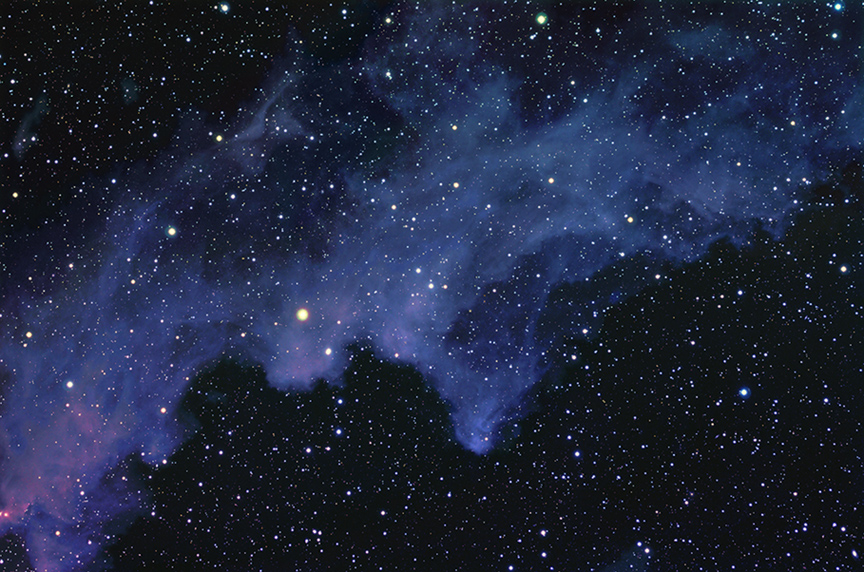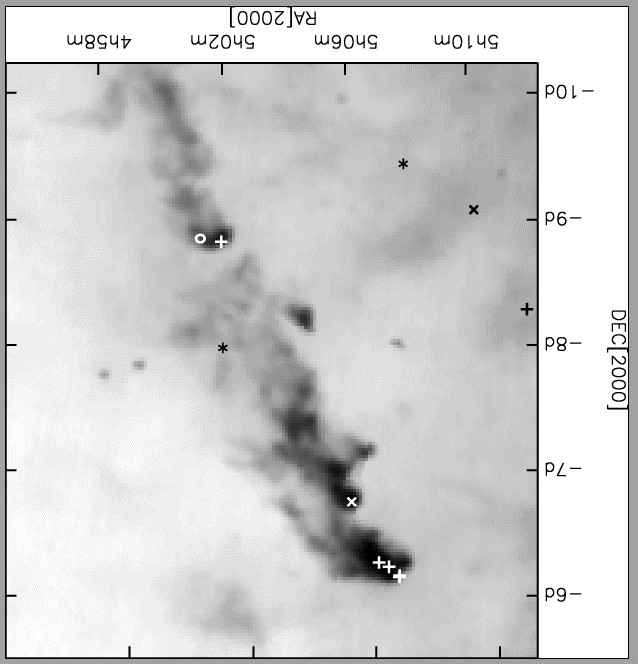 NGC1909 (IC2118) LRGB (North Left) (~40% Downsized -> 1,320K Rotated) |
| * * Technical Data * * |
| Date | 01-22 through 01-24-2009 |
| Exposure | 121hrs 50mins LRGB, L 3hrs, R 3hrs8mins, G 3hrs, B 3hrs42mins. |
| Optics | 1995 AP155EDFS #95, f:7.26, FL=1126 |
| Mount | 2007 AP1200 GTOCP3 #714 |
| Camera | 2005 SBIG STL-11000M, 1.65 arc.sec p/pixel @ -20C, AstroDon I-Series HaRGB. |
| Guider | 2006 SBIG STL-Remote w/Red filter, TAK FS-102, FL-816mm f:8, 1.87arc.sec p/pixel. |
| Equipment | AP Field Flatener, FeatherTouch FTF-3545 & Digital MicroFocuser, PreciseParts Adapters. Custom built Water Cooling and DryAir Purge Systems |
| Processing | MaximDL/CCD w/Russ Croman's Sigma Combine Plug-In, PhotoshopCS2, FITSplug by Eddie Trimarchi, AstroActions by Noel Carboni |
| Location | StarFields Observatory (SFO), Chiefland Astronomy Village, Florida, 29d 24m 26.34s North, 82h 51m 31.26s West |
| Comments |
... Surprised to find Emission nebula. Rersearch reveals the emission is caused by T Tauri stars imbedded in IC2118. See below. ... Over 20 background Gx's. |
http://www.aanda.org/index.php?option=article&access=bibcode&bibcode=2004A%2526A...418...89KFUL We identified new pre-main sequence stars in the region of high-latitude molecular clouds associated with the reflection nebula IC 2118, around and . The stars were selected as T Tauri candidates in objective prism plates obtained with the Schmidt telescope of Konkoly Observatory. Results of spectroscopic follow-up observations, carried out with the FLAIR spectrograph installed on the UK Schmidt and with ALFOSC on Nordic Optical Telescope, are presented in this paper. Based on spectral types, presence of emission lines and lithium absorption line, we identified five classical T Tauri stars and a candidate weak-line T Tauri star projected on the molecular clouds, as well as two candidate pre-main sequence stars outside the nebulous region. Using the near infrared magnitudes obtained from the 2MASS All Sky Catalog (IPAC 2003) we determined the masses and ages of these stars. We found that the five classical T Tauri stars projected on the clouds are physically related to them, whereas the other stars are probably background objects. Adopting a distance of 210 pc for IC 2118 (Kun et al. 2001) and using Palla & Stahler's (1999) evolutionary tracks we derived an average age of yrs and a mass interval of 0.4-1.0 for the members of the IC 2118 association. 
|
 SFO Home |